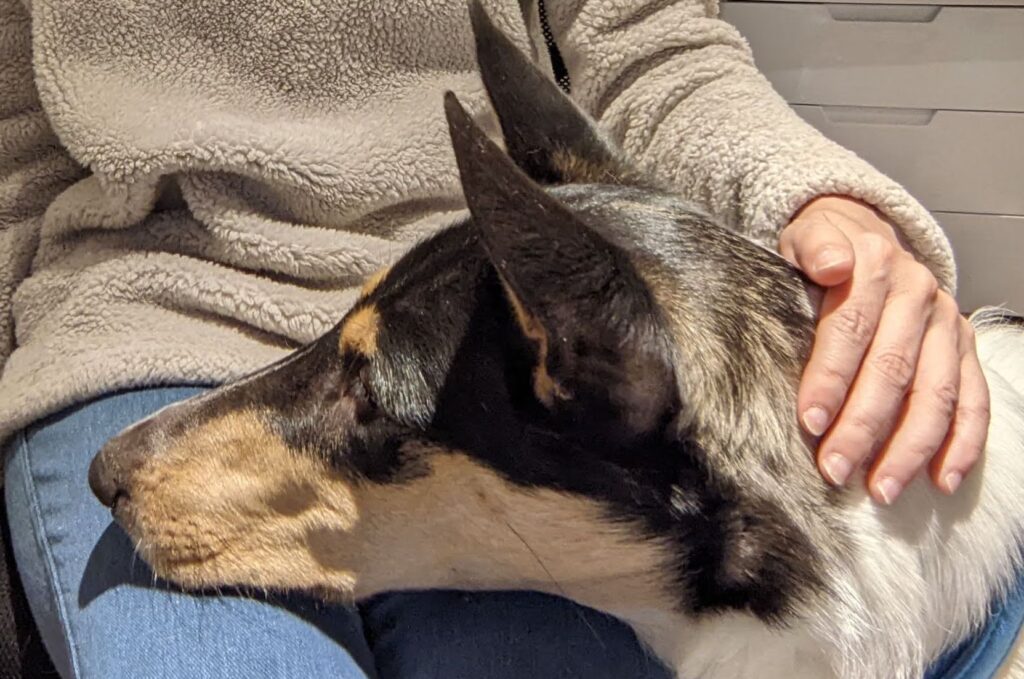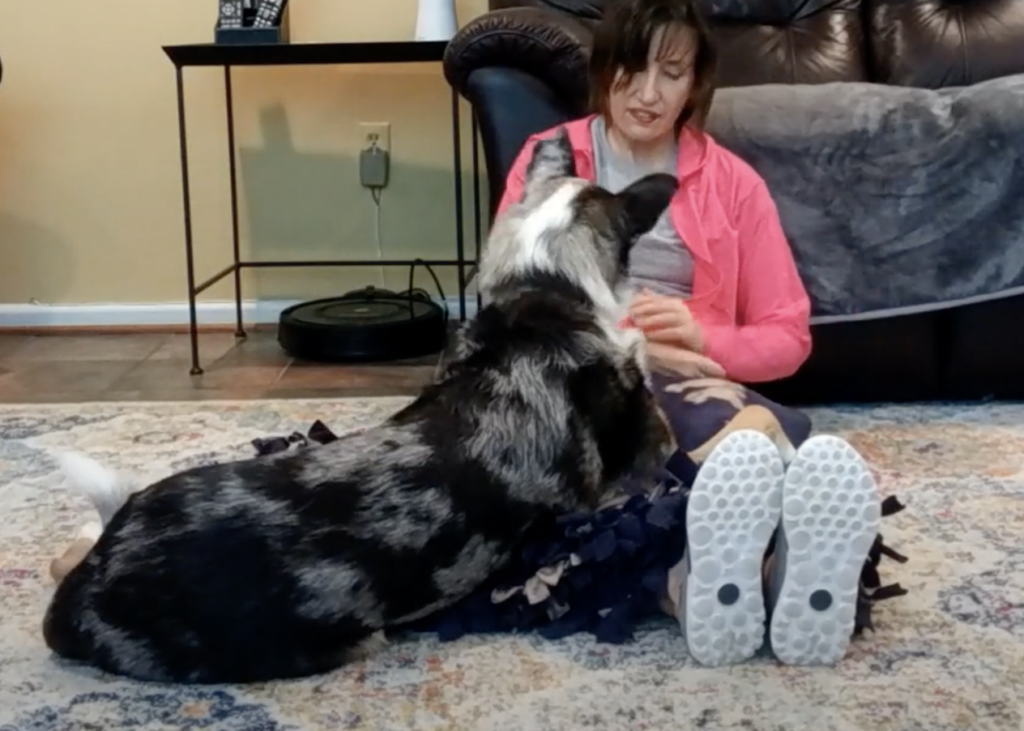Deep pressure therapy (DPT) is a service dog task that, while seemingly simple, can be important for many service dog handlers. DPT involves the dog leaning on or lying down on the handler. The warmth and pressure can be helpful to handlers who have a range of different disabilities. If the handler has a condition like PTSD or another mental illness, the warmth, pressure and contact with the dog may reduce anxiety. DPT may also be helpful for people who have other disabilities. For example, individuals with conditions like arthritis may find the warm pressure eases their pain. People who have neurological or other disorders that cause muscle spasms may find DPT helpful to reduce spasms or discomfort.
DPT is frequently taught to service dogs assisting autistic children. As with all tasks, it is important to remember that task selection is individual. Some autistic children may find this kind of contact with a service dog calming while others may find it stressful or upsetting.
There are many different ways a dog can be trained to perform DPT. The most common way involves having the dog lie across the individual’s legs. Owners may choose to put a blanket across their legs or a pillow under the knees for comfort. However, if the dog is very large in comparison to the handler, the dog’s weight may be uncomfortable. Other approaches include having the dog lean on the owner’s legs or rest their head on the owner’s lap. The dog’s size relative to the handler, as well as the context of the situation and handler’s needs, all play into the process of selecting how the dog will be trained. For instance, if the handler benefits from this task in public situations but would like to be discreet, they may be most comfortable with having their service dog rest their head on the handler’s lap or sit leaning against their legs.


When choosing how the dog will perform the behavior, it’s important to consider the dog’s preferences as well. Some dogs are not comfortable with prolonged close contact or may be stressed if asked to do this when the handler is upset. In some cases, adjustments like providing a mat for the dog or changing the dog’s position for DPT can make a big difference. Teaching the handler how to stroke the dog in a way the dog most enjoys or even give the dog a massage may benefit the handler while helping the dog enjoy the task.
You can teach your clients to incorporate a start button when training their dog to perform DPT; that way handlers can give the dog control over whether to perform this task. A start button is a behavior that a dog does that essentially gives consent for another behavior. In the context of DPT, for example, the handler could sit down on the floor, propping their knees with a pillow and then wait for the dog to offer eye contact as a start button before cuing the dog to lie down across their legs. This podcast goes into more detail on the use of start buttons. Eva Bertilsson and Emelie Johnson Vegh of Carpe Momentum have also presented and written extensively on the subject.
What if the dog never offers the start button behavior? Part of looking for consent means we need to be prepared with an alternate option. One possibility is to train the service dog to perform a different task that may be helpful. For instance, the service dog can be trained to retrieve a weighted blanket.
Even if the service dog is very comfortable with this task, handlers should be educated about indications that the dog needs a break. Well-trained service dogs can be subtle in their stress signs. If the dog seems tense, shifts positions or does not truly relax, the handler can cue a different behavior. Trainers may need to help owners understand not to take it personally if the dog does not enjoy DPT. Explain that dogs, just like people, may enjoy different things at different times. Considering stress levels for both members of the team can help ensure a wonderful working partnership for many years.
Learn detailed “how-to’s” to train DPT and other service dog tasks often needed for PTSD in the course: PTSD Service Dog Tasks
